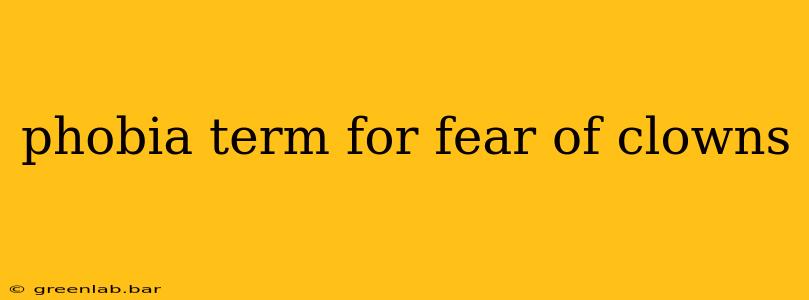Coulrophobia. The word itself might sound a bit unusual, but it describes a very real and sometimes debilitating fear: the fear of clowns. While many find clowns amusing, for those with coulrophobia, the sight of a clown can trigger intense anxiety, panic, and even physical symptoms. This article delves into the reasons behind this phobia, its symptoms, and potential coping mechanisms.
What is Coulrophobia?
Coulrophobia, also known as the fear of clowns, is a specific phobia. Specific phobias are characterized by an intense and persistent fear of a particular object, situation, or activity. In the case of coulrophobia, the fear is specifically directed towards clowns, encompassing their appearance, makeup, exaggerated features, and often, their unpredictable behavior. This fear is disproportionate to the actual danger posed by clowns and significantly impacts the individual's daily life.
Symptoms of Coulrophobia: Recognizing the Signs
The symptoms of coulrophobia can range from mild anxiety to severe panic attacks. These can include:
- Physical symptoms: Increased heart rate, shortness of breath, sweating, trembling, nausea, dizziness, and even fainting.
- Emotional symptoms: Intense fear, anxiety, dread, and feelings of overwhelming helplessness.
- Behavioral symptoms: Avoidance of situations where clowns might be present (e.g., circuses, children's parties, Halloween events), and potentially even avoiding media depicting clowns.
The severity of these symptoms can vary greatly depending on the individual and the intensity of their exposure to a clown or clown-related imagery.
Why Do People Develop Coulrophobia?
The exact cause of coulrophobia, like many phobias, isn't fully understood. However, several factors are believed to contribute:
- Learned behavior: A negative experience with a clown during childhood, such as a frightening encounter or witnessing someone else's fear, can lead to the development of this phobia.
- Evolutionary predisposition: Some theories suggest that humans are inherently predisposed to fear things that are unpredictable or have obscured features, traits often associated with clowns' makeup and exaggerated expressions. This creates an unsettling uncertainty that triggers fear.
- Genetic predisposition: A family history of anxiety disorders or phobias can increase the likelihood of developing coulrophobia.
- Trauma: A traumatic experience unrelated to clowns that has left the individual with heightened anxiety could lead to associating the unsettling nature of clowns with their trauma.
Coping Mechanisms and Treatment for Coulrophobia
While the fear might seem insurmountable, there are ways to manage and even overcome coulrophobia. Effective treatments include:
- Cognitive Behavioral Therapy (CBT): This therapy helps individuals identify and challenge their negative thoughts and beliefs about clowns, gradually exposing them to clown-related stimuli in a controlled and safe environment.
- Exposure Therapy: This involves gradually increasing exposure to clown-related images, videos, and eventually, real-life clowns, under the guidance of a therapist. This helps desensitize the individual to their fear.
- Relaxation techniques: Techniques like deep breathing exercises, meditation, and mindfulness can help manage anxiety symptoms in the moment.
Seeking professional help from a therapist or counselor specializing in anxiety disorders is crucial for individuals struggling with coulrophobia. They can provide personalized treatment plans and support to help manage and overcome this fear.
Conclusion: Living with Coulrophobia
Coulrophobia can be a significant challenge, but it's important to remember that it's a treatable condition. By understanding the causes, recognizing the symptoms, and seeking appropriate treatment, individuals with coulrophobia can improve their quality of life and reduce the impact of their fear. Remember, help is available, and you don't have to face this alone. Reaching out to a mental health professional is the first step towards managing and overcoming coulrophobia.

